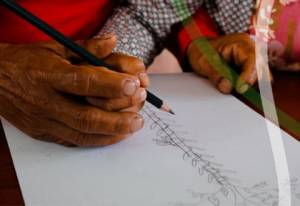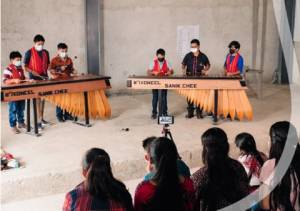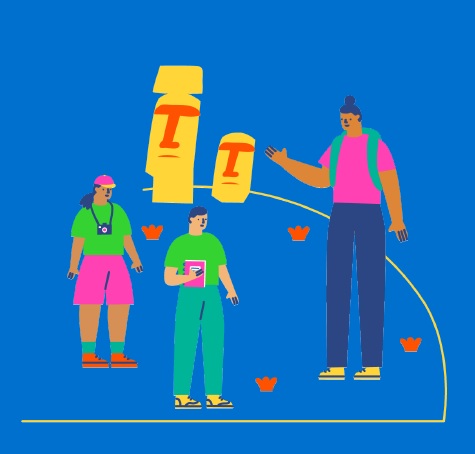Goals
- Facilitate the integration of intangible cultural heritage in formal and non-formal education and policy dialogue in Ecuador, Guatemala, Peru and Chile.
- Strengthen teachers and education practitioners’ use of methods and capacities in this new area through trainings and workshops in the selected countries.
- Promote information sharing on the lessons learned from the country projects among policymakers and practitioners at regional and international levels through UNESCO’s networks and publications.
Safeguarding intangible cultural heritage is confronted with significant challenges today, whereby the continued transmission from person to person and from generation to generation of many expressions and practices is under threat. The region of Latin America and the Caribbean is no exception. In this regard, safeguarding intangible cultural heritage in formal and non-formal education is an untapped opportunity to ensure that future generations can continue to benefit from and contribute to their living heritage while making learning more relevant and meaningful for them.
The region is already particularly active in integrating intangible cultural heritage in education through intercultural education and community-based education. The UNESCO offices in Santiago, Chile, and Havana, Cuba, have been working together since 2018 on a research and mapping project to integrate Living heritage in formal and non-formal education. This project aims at implementing a series of national trainings and monitoring exercises, building on the insights and connections established during the previous mapping and research project.
The project is specifically composed of four activities in two phases; national trainings and follow-up activities.
Mapping process
As part of Phase 1 of the project, a mapping and research process was carried out to understand to what extent and how intangible cultural heritage is integrated into formal and non-formal education in the participating countries, Ecuador, Guatemala, Peru and Chile.
Trainings of Educators
As part of this Phase, Teams were established from both Culture and Education Sectors of the UNESCO Field Offices to develop training materials on integrating living heritage and implement work-plans to do so tailored for each national context. Mapping and research led to the national trainings and meetings that were conducted in the 4 countries targetting. educators from formal and non-formal settings, including members of communities that play the role of bearers of one or more intangible cultural heritage practices. The trainings introduced educators to the main concepts of intangible cultural heritage and transformative education for sustainable development, global citizenship, cultural diversity, and peace. It included discussions on existing approaches and methodologies to incorporate intangible cultural heritage in learning activities as well as the designing of lesson plans for the participants to implement in their community(ies).
Implementing Lesson Plans
Each Field Office selected six lesson plans from their workshop to monitor and accompany their implementation with local communities.
In the context of the Integration of Intangible Cultural Heritage in Educational Practices in Latin America and the Caribbean project, the monitoring phase included a follow-up and two types of forms: a logbook and surveys. The forms aimed to analyse the learning outcomes of the participants of the trainings and the follow-up is a monitoring of the realisation of the educational activities elaborated during the workshop.
Evaluations, Reports and Recommendations
Along with the monitoring activities, evaluations were done to assess the content, materials, and teaching-learning methods of the lessons. In particular, this activity considers the feasibility of the lesson plan, the accuracy of the information on the ICH element(s), and the relevance of the ICH-ED links to the subject. Following regional guidelines and an evaluation rubric, each Field Office evaluated the lesson plans and activities monitored to prepare national reports, as well as a regional report prepared by the OREALC/UNESCO Santiago office.
Building on the lessons learned through the pilot projects and trainings, a set of recommendations for the development of national and regional policies will be developed involving national counterparts and other relevant stakeholders. These recommendations will be disseminated to governments and other relevant stakeholders to sustain successful results beyond the project.
Project Outputs
- Detailed lesson plans and activity materials to integrate living heritage into education available
- Skills of teachers and educators to integrate the safeguarding of living heritage into educational programmes and activities strengthened.
Impact
The project helped in facilitating the integration of ICH in formal and non-formal education and policy dialogue, thereby contributing to Target 4.7. It also strengthened the teachers and educators’ capacities and promoted the sharing of information and lessons learned among policymakers and practitioners at the regional level. The national trainings for the project were also designed to strengthen capacities of new and already practicing participants, ensuring the sustainability of not only the programme’s efforts but the work of participants in their community as well.

© UNESCO

© UNESCO
The content of the projects and documents referenced in this platform do not imply the expression of any opinion whatsoever on the part of UNESCO, including designations employed concerning the legal status of any country, territory, city or area or of its authorities or concerning the delimitation of its frontiers or boundaries.
